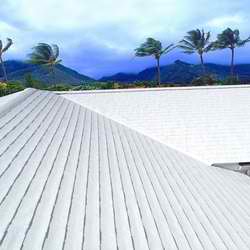Factors to Consider in Selecting a Cool Roofing in Denver
The concept of a cool roof in Denver may be new to some people, although it has been around for decades. With talks about global warming and climate change dominating the headlines today, cool roof systems received renewed interest from owners and contractors.
Cool roofing Denver offer several distinct advantages that conventional roofs do not have. These are lower building temperatures, reduced energy needs for cooling, lesser electric bills and extended roof life.
Before deciding on the type of cool roofing to install on your roof, consider these important factors we listed below to assist you in your selection of the best cool roof system for your needs.
1. Integrated System
Ideally, the major components of the cool roofing system must be supplied by a single supplier to minimize if not completely eliminate incompatibility. The highest performance and lowest chance of incompatibility of the system are attained if only a single supplier is involved in the project.
2. Prefabrication
The construction industry today is experiencing skilled labor shortage. To promote efficiency through the reduction of installation errors and use of manpower, the system must be installed correctly. The capacity of the supplier to customize and pre-manufacture roofing materials and accessories will go a long way towards achieving this end. The more roofing materials and accessories that your supplier can prefabricate, the more you will attain efficiency.
3. Flashings
Find out the method and materials used for waterproofing the roof. The workmanship of the flashings is important because this is one area where most roofing failures exist due to movement, contraction and expansion of roofing materials. Flashings that are prefabricated in the factory with its controlled setting are preferred over those fabricated on worksites where more errors could occur. Flashings closely integrated with the system are better than those that are not. Ensure that flashings are included in the warranty.
4. Membrane Materials
The raw material components of the membrane and how they are manufactured are important factors to consider. Various materials result to different durability, benefits, carbon footprint and weight impact on the roofing.
5. Warranty Coverage
According to homeowners, this is one aspect of the construction that is often unmet by manufacturers. This is, in fact, one of the most controversial issues hounding construction projects. Examine the fine print closely as it indicates the weakness of the system. Look also for the exclusions in the warranty and provisions on extra costs. Pay particular attention to the maintenance guidelines of the manufacturers, which could void any warranties if you fail to strictly observe them.
